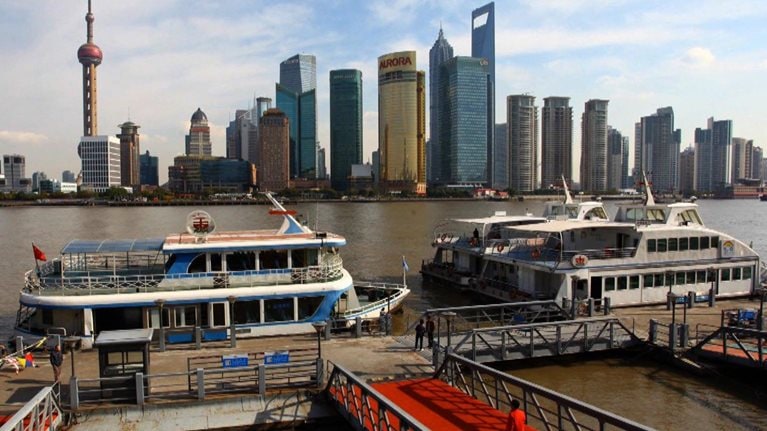In the world of Twitter and citizen campaigns, of strained budgets and competing needs, infrastructure decisions will always be hard fought. But how are they won, and how should they be decided? Not just with technical arguments to the elite but with hearts-and-minds appeals to the public and a deep understanding of citizens’ and customers’ needs.
Infrastructure leaders who are considering new investments and looking to win public support can learn from their peers in consumer-focused industries, companies that define themselves—and live or die—by their ability to understand customers and to adapt quickly and precisely to emerging trends and preferences.
Incumbent operators, too, can apply these techniques. Holding a monopoly position, as they often do, makes it easy to pay little attention to the consumer. We are in an industry of hard hats and operational focus more than focus groups and customer segmentation.
But in the long term, returns from infrastructure always depend on the end customer who pays the bills. True, there will be regulation and political context, but ultimately, the best strategy for regulation and for stakeholder management, and the right strategy for the country, is a strategy centered on meeting the needs of consumers and citizens.
For example, Thames Water, a UK private utility company that provides water and waste treatment for 15 million customers in London and the Thames Valley, has prices strictly set by an independent, technical regulator. Its formally stated vision, though, is that “if customers had a choice, they would choose Thames Water.”
A strong focus on the customer does not mean every investment should go ahead, and the counterarguments on cost or local impact should sometimes be decisive. It does, though, mean that infrastructure planners and proponents should prepare the right facts and conduct the right research.
How can we refocus on the customer? From serving some of the largest companies in consumer goods and infrastructure, we suggest three steps:
- First, think positive. The best consumer companies are focused and disciplined about their brands’ positive value proposition and core emotional appeal, but the same is not always true for those making the case for infrastructure.
- Second, think big by considering “catalytic” benefits to the economy. Catalytic benefits are part of the standard framework of economic assessment and include broad impact on trade, investment, and industrial clusters. They are also part of a hearts-and-minds strategy that appeals to a far wider contingent. By speaking to the core of what a benefit does and feels like, they speak to issues of identity and pride.
- Third, keep talking. Consumer and retail companies make use of constant feedback from their consumers through purchases, but the insights from systematic analysis of social media and “generated data” such as Google searches are valuable, and are also continuing to increase. To understand the conversation that they are in the midst of, infrastructure companies and planners should mine these insights.
Think positive
As mentioned, the first step for infrastructure companies is to think positive, learning from customer research in consumer-goods companies to deeply understand the specific, positive, and emotionally resonant appeal of their project. In many ways, consumer-goods companies have always known how to do this. Coca-Cola’s “brand emotion” is happiness and moments together, and each advertisement and brand presentation offers a variation on that theme. Its 2010 World Cup theme song, “Wavin’ Flag,” had more than 20 different variations appealing to different regions, but all played on the brand’s core emotion, happiness.
Similarly, stories of national progress and development, as well as the broader national narrative, are rife in advertisements for consumer goods in much of the developed world. Recurrent themes include unstoppable modernism (“now is our time”) and national destiny.
Beyond consumer-goods companies, research and writing on the power of emotion in thinking has exploded in recent years. Neuroscientists such as Antonio Damasio have helped us understand that emotion underlies, rather than opposes, reason. In politics, Drew Westen’s The Political Brain (PublicAffairs, 2007) popularized the argument that emotion, not reason, dictates individuals’ political decisions. From behavioral economics, Daniel Kahneman’s Thinking, Fast and Slow (Farrar, Straus and Giroux, 2011) argued that we are governed by a “fast and intuitive” system of thinking as well as a deliberative, logical system.

Voices on Infrastructure, Number 3
Those who believe that new transport and other infrastructure investments are crucial for a country’s long-term future should be equally clear about their projects’ positive value proposition and emotional brand.
The key to doing so is to ruthlessly prioritize and clarify which emotion is at stake. Is it national pride, national competitiveness, hope for the future, family and security, or something else? No retail proposition can win on every dimension—on price, quality, and convenience—and successful retail companies typically excel on just one or two dimensions of the “retail pentagon” (comprising price, range, service, experience, and convenience) and carefully map their strengths against competitors. Similarly, no infrastructure proposition can win on all points. With no message discipline, there is no message.
Beyond this, though, foundational research on the “motivation hygiene” theory or “dual factor” theory has long shown that while many preferences, often including avoidance of irritations, must meet a “hygiene” level, or minimum bar, they have no further energizing power once met. Motivating factors have continuing force.1 Finding and emphasizing them is vital for success.
Think big
Building an emotionally compelling story around infrastructure is possible. In fact, it is common for politicians, who build their case from words rather than numbers.
When Governor Arnold Schwarzenegger made the case for high-speed rail in California, he said, “The faster we move economic goods—that’s economic power, and this is why all over the world they are building high-speed rail”—appealing in one sentence to catalytic benefits, regional pride in economic power, and competitiveness with the rest of the world.2 And when Russian President Vladimir Putin made the case for high-speed rail from Moscow to Kazan and Yekaterinburg, he said, “[Our funds] should be directed to projects that will change the face of the country and open up new prospects for development.”3
To do the same, to move from time savings or convenience to local and national pride, infrastructure leaders need to think big—and count big, quantifying the benefits that make this case.
There is a standard framework for cost-benefit analysis of major infrastructure investments, used by most major governments. It starts with the direct benefits for users and producers, including the monetary value of time savings and convenience. It then moves on to the multiplier effects, as money cascades from till to till, creating additional wealth. Finally, it tallies the catalytic impacts on underlying productivity.
But the theory almost invariably exceeds the practice, and the catalytic benefits are often ignored. Finding ways to expand the conversation and the measurements beyond the direct and multiplier effects to include the catalytic impacts is crucial to counting the full benefits of infrastructure.
For example, when the UK government quantified the case for expanding Heathrow airport in 2009, catalytic benefits were simply excluded. The official assessment included a long list of potential catalytic benefits for “firms…enjoying the same broad location,” for “deeper markets,” for firms “reliant on air transport,” and for “the UK’s ability to compete in international markets.” At the end of this list, though, came the anticlimactic line that “it might be very difficult to quantify such benefits….[h]ence no estimate of wider economic benefits is included.”4
Similarly, there are few, if any, quantitative assessments of the catalytic benefits of some of the world’s biggest infrastructure projects, including the recently discussed California high-speed rail and Moscow–Yekaterinburg high-speed rail, and the EastLink toll road in Melbourne, Australia.
It is easy to see why. Many of the impacts are highly specific to context, prone to complicated feedback loops and tipping points, and unpredictable. As the evaluation of the United Kingdom’s high-speed rail conceded, “there is no ‘off the shelf’ methodology that is widely used in UK transport appraisal to assess the complex issues of productivity, trade, and regional economic competitiveness.”5
And yet the catalytic impacts—the wider economic benefits—can be enormous, changing the outcomes of cost-benefit analyses and transforming the prospects for hearts and minds. With one major piece of infrastructure on which we worked, the catalytic benefits were as big as the direct and multiplier effects combined. Intuitively, that makes sense: What would the economy of New York be without its subway system, or Memphis without its airport? An existing infrastructure asset can be fundamental to a regional economy, and a new infrastructure asset can transform one.

Would you like to learn more about the Global Infrastructure Initiative?
Infrastructure leaders can succeed at thinking big—at bringing to debates and analyses the full benefits of their project, including the catalytic ones, in three ways:
- First, by pinning down causation with enough precision to be persuasive. Would an airport increase exports? Prove it. The standard of evidence is constantly rising, and simple comparisons on cross-tabulations are no longer enough when sophisticated econometrics can answer the question more convincingly.
- Second, by paying proper attention to space. Infrastructure is intrinsically place-specific, so analysis has to escape from the national, regional, or local to the level of individual business clusters and even individual companies. Thanks to the proliferation of data, clusters can now be mapped at a company-by-company, industry-by-industry, and street-by-street level. Doing so allows the benefits of infrastructure to be pinned down and quantified, allows those clusters to be mobilized as allies, and brings the argument alive for citizens. For example, Heathrow airport identified the aviation-using clusters in its region, including IT, and secured endorsements from Microsoft, BlackBerry, FM Global, and Electronic Arts.6
- Third, by paying proper attention to time, with rigorous benchmarks. Opponents of infrastructure projects will often suggest an alternative plan or location. Finding the nearest equivalent projects that match along the dimensions of geography, assets, and political context can be illuminating. Heathrow expansion, again, faced alternative proposals for a new airport in the Thames Estuary, with discussions of Heathrow’s closure and redevelopment as a contribution to the cost and source of alternative employment. They were able to point out that the old Hong Kong International Airport, with skyscrapers lined up to the airport fence, has been empty more than 15 years and is still undeveloped, and Denver International Airport took 22 years to complete; that Battersea Power Station, on the bank of the River Thames and moments from superprime real estate in London’s Chelsea neighborhood, has taken more than 33 years to develop; and that Bankside Power Station took 19 years to be reopened as the Tate Modern.7 These projects helped change the perception about what the closure of Heathrow would mean for the local area.
Once identified and quantified, the catalytic benefits also need to be expressed in a way that means something to the ordinary user and citizen—translating it, in effect, from net present values and monetized equivalents to jobs, house prices, foreign investments, and industrial clusters, to create a compelling and tangible vision.
Keep talking
The third lesson for infrastructure leaders is to keep talking to consumers, as consumer companies do—developing a constant dialogue beyond mere purchases. Once the message is developed and the appeal is pitched with suitable resonance, it needs to be continually fine-tuned and adjusted. The “brand personality” of the infrastructure project is often attacked and needs to be monitored and defended; continual conversation allows the infrastructure company to provide better service to users, ameliorate local impact, and generate greater loyalty.
And, as with consumer companies, infrastructure companies can increasingly draw more information from social media—from blogs, Twitter feeds, Facebook feeds, and search data. Buzz volume, for example, shows which arguments are “winning” and when conversation spikes, based on the number of messages, tweets, and blog posts. Sentiment analyses use algorithms to determine if social-media postings are positive, negative, or neutral. Accuracy is greater than 70 percent, and with smaller samples or more resources can be combined with manual analysis. “Word clouds” show relative prominence of ideas, measuring the frequency of occurrence of particular words. And detailed, systematic (and human) reviews of material can reveal a gap between the arguments that motivate social-media users and how local or other groups express them to policy makers. Making full use of tools such as these, infrastructure leaders can start to understand more directly what the public may object to and how to address it.
Infrastructure investments can transform lives, regions, and nations. Without public support and a clear consensus audible from the cacophony of claims, interests, and beliefs, new investment is impossible. By thinking positive, thinking big, and continuing to talk, those interested in new infrastructure can stay focused on the needs of consumers, and win and keep public support.


